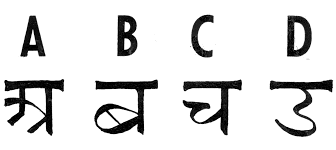
‘Historical bias is defined as a text or source that presents an account of an event or a figure that is either untrue or is embellished in order to present a more favourable or negative account.’
All countries and states have an origin story. They have persisted and thus, existed, and they have a past which is often ‘ugly’. It involves struggles and tough justice against many different powers. Today after hundreds of years we are introduced to this vast history through our education curriculum. But it is up to those in power in politics today, to decide what to teach from the events that happened yesterday; very well in favour to fulfill personal propaganda and manufacture like-mindedness.
‘In the United States, one of the most striking example is the continuous narrative of the United States as a state established on the principles of personal liberty and democracy. Although aspects of U.S. history, such as slavery, genocide of American Indians, or disfranchisement of the large segments of the society has now been included to the schooling (yet not everywhere), they are presented as marginal in the larger narrative of liberty and democracy.’
Throughout the 18th and 19th centuries, as Europe gradually dominated the world through the self-imposed mission to colonize nearly all the other continents, ‘Eurocentrism’ prevailed in history. It is the practice of viewing the world from a European or generally Western perspective with an implied belief in the pre-eminence of Western culture. It may also be used to describe a view centred on the history or eminence of white people.
History is shaped by those in power, to further sustain it through time. We can see how it mostly always favours the masses. Using fabricated history as evidence, beliefs are strengthened and imposed on not only the remainder, but also on the children of the masses, neither of whom asked for it.
The teaching of history to promote national sentiment is always a priority. Until today, in most countries history textbook are tools to foster nationalism and patriotism and promote the most favourable version of national history. This bias has also been used to promote religious ideologies around the world. And being such a diverse country, India falls vulnerable to the same. Education, which should be a tool to build, could turn into a tool to divide. States/areas of conflict also fall under the same vulnerability where young minds are infiltrated to instill hostility against specific groups of people or ideals. (Example: fabricated Islamic teaching by terror groups as well as anti-Islamic teachings elsewhere)
India’s education ecosystem has often been disturbed by the conflicts of the left and the right. A difference in political stances and expectations from the government has been the reason for many sudden knee-jerk changes because of which the students have suffered, and a potential to build an actively thinking population is crushed. Both groups want to honour their own heroes while preserving and writing (ir)relevant history in the textbooks. This takes a form of selective teaching, where only the lessons relevant to the political power is taught, and not what is relevant to the book of evident history.
In India the political ideologies are very deep and they drive the country on its shoulders, for at least 5 solid years that is. It is unfortunate that changes in political power has to have an effect on the education curriculum. A change every now and then makes up a turbulent history lesson and thus mixed opinions. In an attempt to move personal mandates and canvas a half-baked attempt, politicians try to teach the very teachers who are trying to do their jobs. However much vision the politicians might have, the teachers can’t just photograph it and wave around in the classes and call it teaching. Direct political interference in teaching is well, just politics and totally non-productive. Imposition of such ideals only explains the failure of that very own fundamental. Instead history should be created so well that it doesn’t require such unfair exercises in the future.
India sees a very large diversity in its culture, arts and of course its history which is unique to every state and region. To preserve this history correctly in the school and higher education curriculum is very difficult but very necessary and not quite impossible. Politics at state level might have a greater tendency to fiddle with academic curriculum in schools and colleges. In India school curriculum is decided by education boards like CBSE, CISCE, UGC, state boards etc. as well as NCERT. Surely these bodies work well within their capabilities, but surely as well, governing political power somewhere will/has try/tried interfering with them. And not only small boards; when an entire country is riding an influential political wave, it is not hard to miss out small damages to even the bigger setups. Not exploring how that can be done and learning from history that it can be, the question in light is how this bias can be kept away from education.
One augmentation that can satisfy us greatly is the protection of the education curriculum from bias by a constitutional body. A constitutional body like the Election Commission of India is best at justice between stands. If a sub-body such as one ‘History Curriculum Regulatory Body’ can be put under the Election Commission, it can directly overlook all the changes in any history curriculum across any board of education. All additions and changes to context and content will have to be approved by this body. A review of the present curriculum will also eliminate any serious attempts so far. This body will prevent politicians trying to infiltrate common educational grounds and build their temples in it. This body can prevent a historical bias.
Germany attempts to be an example of how to remove nationalistic narratives from history education. The history curriculum in Germany is characterized by a transnational perspective that emphasizes the all-European heritage, minimizes the idea of national pride, and fosters the notion of civil society centred on democracy, human rights, and peace.
‘Unity in Diversity’ is what we preach in India, hence it becomes important to protect all groups of the country. Facts are truth and thus we should always build our opinions around them. Curriculum should be based on good evidence and accountable research. The teaching of our past should be driven less by ideologies and more by evidence. The construction of an individual opinion starts at home, we should always be driven by action, of present and of the past. How the teachers translate the written text in the classroom is also very important. If we start teaching about historical bias itself and its ill-uses in history, we in turn can inspire the will in children to not believe everything in the books and explore the world’s truth on their own.
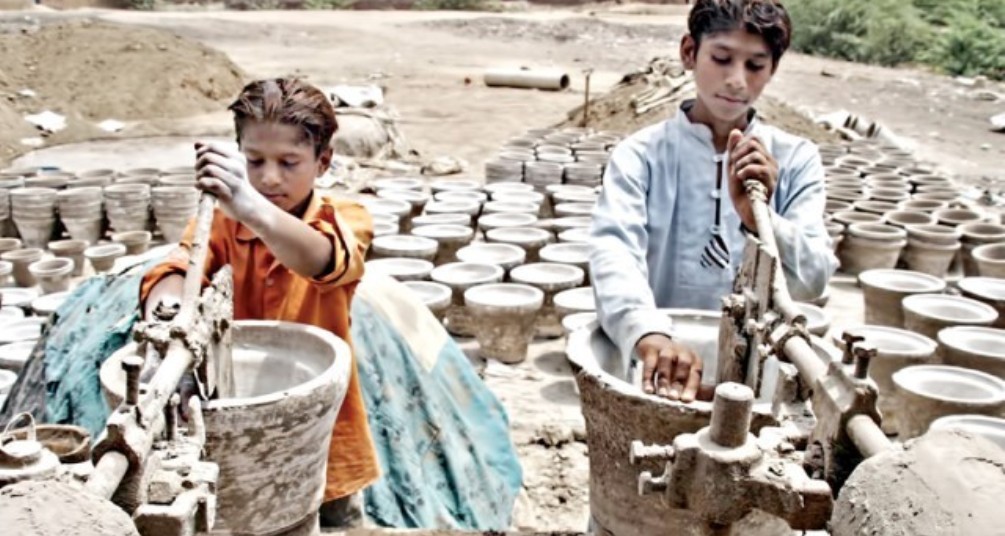
Discussing the needs, benefits and working strategy of the proposal to employ a Skill Ambassador at training centres to bridge the gap between training partners and relevant governing bodies involved in numerous skill development schemes being administered and executed by different government, private and semi-private bodies.
In the year 2018, according to PMKVY official website, the number of training centres suspended across India under PMKVY was nearly 207. Reasons include violating marketing guidelines, making mass or fake enrolments and others. This is the result of tight checking and thorough government inspections. Some of these centres might have been suspended due to inefficient or improper work. These centres could have still stayed and continued to empower the mission. Not all of these training centres could have been retained, but instead of only keeping a tighter check, helping training centres in maintaining a better professional standard and regular work on guidelines, the entire process becomes much easier and encouraging.
Policies when put to action start showing out leakages. These leakages can be seen at the field level in the form of incompetency, inefficiency, ill-ambitioned entities, unlawful activities etc. These unforeseen leakages need to be dealt with directly. With soaring ambitions of the Skill India mission of training millions within the next few years, it becomes extremely important to identify problems at the grass-root level and devising plans to work on them. Setting up a system is not enough, being a part of that system is what will deliver strong growth and estimated results. The Skill Ambassador can ensure smooth functioning of the system at the practical level and being an active part of the system. The Skill Ambassador can minimise these leakages and make the operation more wholesome. The idea behind this position is not to introduce a new working mechanism but to empower and simplify the existing processes.
Various schemes at present outsource the monitoring work to the ‘Big Four’ accounting firms. The workforce provided is temporarily associated and charges a considerable amount for their services. No argument here about the quality of their work. But consistency and the size of teams is a challenge. These teams make surprise or scheduled checks at training centres and other facilities which is not enough to suffice consistent monitoring of such widely spread schemes. Comparing to permanent employees, this system consumes more government resources to provide quality but insufficient results.
Listed below are numerous inefficiencies in the system that need to be mitigated-
To resolve all the difficulties mentioned above and empower the Skill India Mission, the proposal to employ a ‘Skill Ambassador’ to all training partners under each government initiative is thus put forward. The need and intentions are already elaborated. The duties are mentioned below.
The skill ambassador will have 4 duties under their belt-
We need to assume from the training partner’s viewpoint, that they might feel uncomfortable, uncertain or even threatened with the presence of an outside entity within their workspace. This is justified. The position of skill ambassador needs to comprehend in a way wherein he/she is a part of the working system inside a skill training facility. The skill ambassador will be bound to confidentiality in all internal matters until faced by any illicit operations after which he/she will step up to take relevant actions. If all operations obey guidelines, all persons shall stay cooperative and mutually benefit each other.
The skill ambassador’s job is not to supervise or control the working environment. He/she cannot be a hindrance in the freedom of operations. They instead, shall act as mentors whose job is to enhance the overall productivity and efficiency of the training facility.
This is the time to make efforts to boost the efficiency of the Skill India Mission. This needs to done by incorporating practicality into policy-making. The skill ambassador initiative will attempt to blend government resources and knowledge with hard-working private skill centres which will multiply the productivity and enhance everybody’s growth potential. By bridging communication gaps, lending a helping hand, providing information and presenting new schemes, the skill ambassador will more than help private skill training bodies. A direct government presence in the building also increases accountability and transparency. This is an ambitious idea yet very logical which minimizes the scope of error and helps in filling all the holes to ensure that Skill India Mission stays on track and gloriously accelerates towards its enormous potential.

‘Indian Institute of Skills’ (IIS) and ‘Delhi Skill and Entrepreneurship University’ (DSEU) are two major benchmark initiatives recently taken up by the Ministry of Skill Development and Entrepreneurship government of India and Delhi respectively under SKILL INDIA MISSION. These Institutions shall provide sector specific certificate, diploma and degree programmes directly related to job roles in demand. This comes after the government and the policy makers in India have realised the importance of skill development. Since the establishment of ‘Ministry of Skill Development and Entrepreneurship’ in 2014, new ideas and initiatives have been subject to constant experimentation. The government has since been trying to tie loose ends and mitigating inefficiencies in the skill ecosystem of India. Acknowledging the recent attempts, NAPS, Skills Universities is one of the boldest and most far-farsighted initiative in the field of skill development in India.
But what are Skill Universities, how do they work and why are they required
EMPLOYER LOOKS FOR SKILLS NOW , DEGREE IS ONLY TO MEET GOVERNMENT NORMS
A skill university unlike an academic university provides certificates, diplomas and vocational degrees to students who wish to learn industry or job-specific skills or gain specialised technical and practical knowledge. These universities usually allow high school or senior secondary graduates to be enrolled. The length of courses vary from weeks to months and even years. Their aim: create skillful graduates ready to take up a job right out of the university gate.
In India, the proposals for such institutions speak about teaching courses and skilling the youth in line with the demands of the market. The courses and methodology shall be flexible; much like the industrial markets of a developing nation. Going as far as guaranteeing a job to its graduates, the roles of these proposed universities is very clear.
As per the census of 2011, there were 315 million school students in India. In the year 2017-18, 36.64 million students were enrolled in higher education out of which more than 70% will graduate with academic degrees. These numbers slightly change each year, However, according to citations from data given by periodic labour force survey (PLFS), unemployment rate in various level of degree holders is somewhere around 36%. That clubbed with the unemployed population of 18.6 million hints us towards something bigger. It may be time to realise that higher education does not guarantee employment, especially in India. India has been driven towards academic based education since forever, but still such big numbers have trouble finding jobs. One of the problem is that they are not trained for the right field. And not only the students, but even the industries suffer from lack of trained personnel. If such a large population is trained according to the needs of the Industries and the Indian market, both the Indian economy and millions of students will find a way to improve and excel.
India is proud of its massive youth and plans to turn it into a productive workforce. It is trying to skill most of its capable youth to contribute to the industries and further to GDP. It not only stops there, in the near future India plans to start exporting it’s manpower under the banner of ‘Skilled in India’. These are some very brave goals. This cannot be achieved while keeping skill development in the shadows. The skill universities once created will carry a badge of prestige and will vest all of its graduates with the same honour and recognition. The youth would want to be skilled, which comes with ‘added bonuses’ like getting employed!
A university unlike a training centre provides a much more holistic environment. A training centre is a very specific goal-driven piece of infrastructure, on the other hand a university flaunts a much more engaging atmosphere. Hundreds of students learning together in a well-recognised institution surely encourages them to perform better. With such recognition, employability gets an upper edge, just like the academic scenario. Even without guarantee from the government such as Delhi’s to provide jobs to every graduate, a skilled person is already guaranteed to be employed given that he/she was trained for the right field and in the right way.
ü Unlike an academic college where a student spends at least 3 years for graduation and around 2 for post-graduation, a student has the choice to study a course with much shorter duration ranging from weeks to months at a skill university/institute.
ü After any course, graduates from such institutions would most certainly be employable which even an academic graduate degree does not guarantee.
ü Regardless, the students still enjoy the engaging atmosphere of a regular college where they get to participate in numerous activities and socially connect to other ambitious students.
The Delhi government’s proposal talked about merging existing industrial training Institutes and centres with the new DSEU. The reason given by Kejriwal holds solid ground to be modified and said about most policies across all fields: “Various governments have made skill centres but those centres did not adapt to the requirement of the market. Courses, once designed, remain the same for 25-30 years”. This is indeed very true and a point of concern. “The new university will design courses after taking into consideration relevant market research”, he follows up for the same. Stagnant curriculum and improper structuring created nothing but inefficient products useless to the market. These new universities will adapt to the market and its needs like mentioned before. Monitoring and coordinating with private institutions and training centres is still a mammoth task. The size of these private setups is small, however, reputable government institutions will act as a benchmark and a direct competition to the same. This helps in bringing up overall quality of the skill ecosystem.
By skilling students in an inclusive environment with the best amenities, we can guarantee great results coming out of their sentimental investments of getting to learn in such a prestigious and promising institute. By providing a wholesome and a diverse environment, students will be prepared for not only a specific job role but the entire understanding of an industry. If India really wishes to skill its pupil and export the same manpower, then these universities will majorly help in making it a reality and sustain the idea of SKILL INDIA in the long run.
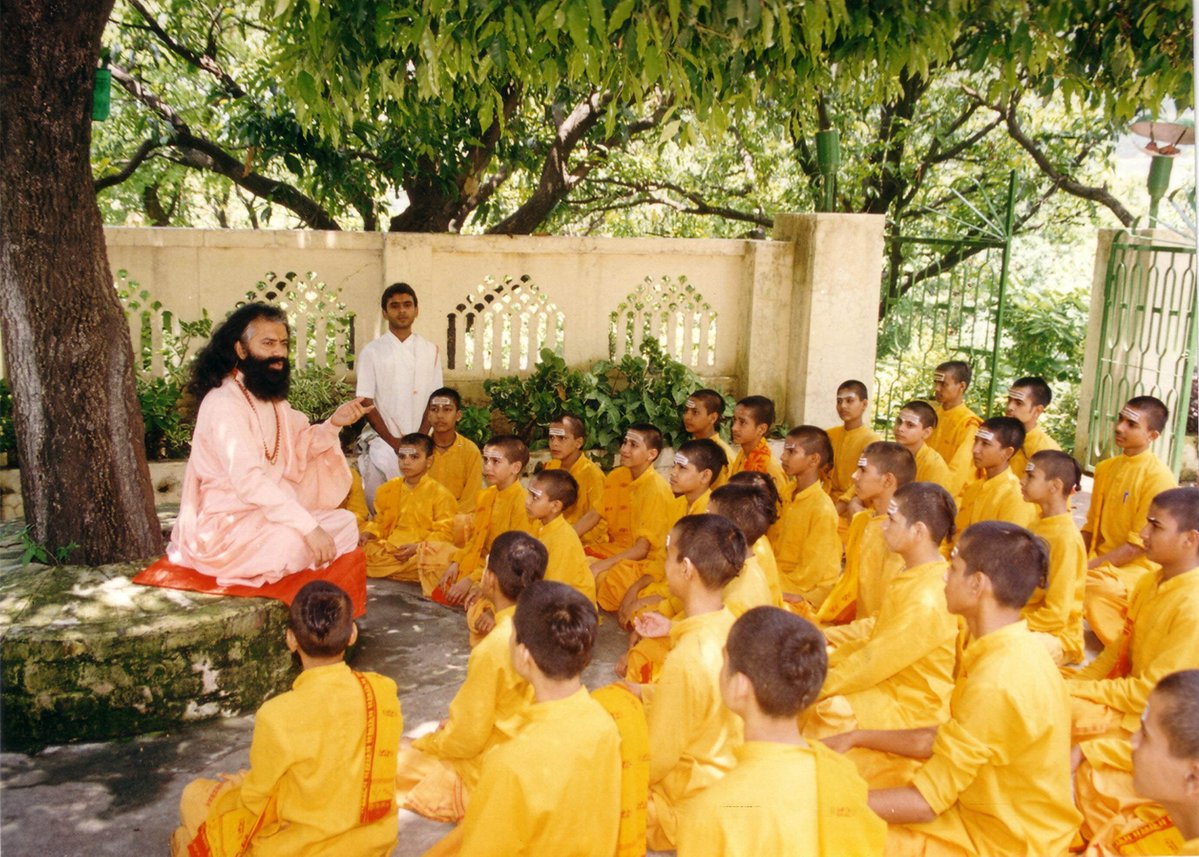
In the changing world scenario with regard to industry and the job market, there is now an overpowering need for skilled workers around the world. However, the definition of 'skill' in India, and the world in general, has also changed over recent years. India is relatively young as a nation with around 28 million youth population being added every year. More than 50 per cent of its population is below the age of 25 and more than 65 per cent are aged below 35. In 2020, the average age of an Indian will be expectedly 29 years, while it will be 37 for China and 48 for Japan. Hence, the scope for “skill” development in India is highest as compared to other nations under SKILL INDIA MISSION. Ministry of Skill Development and Entrepreneurship is putting significant efforts in the form of new initiatives like NAPS, SKILL UNIVERSITY etc. for achieving the desired mandate.
About 90 percent of employment opportunities require vocational skills rather than traditional education. Only 20 percent of our graduates get employed after completing their degrees. The rest are unable to get suitable employment due to the lack of employable skills which involves practical knowledge rather than theoretical one. In the present context of globalization, the demand for skilled and multi skilled workers has increased. Therefore in the context of developing countries, such as India, there is a critical need for quality skill development and training which will eventually generate millions of jobs in the society.
In general, apart from the core subject expertise, some of the prominent employable skills that employers seek are communication skills, commercial awareness, attitude towards work, lifelong learning, self-management, teamwork, self-motivation, adaptability, stress management, creativity, interpersonal sensitivity, technology/IT skills. To make India the skill capital of the world, the school as well as higher education curriculum will have to go through a dynamic change, Skill development should ideally begin at the age of 13, from eight standard, while in school. Integration and compilation of skill development and education is essential for skilling to take wings. Skill development will remain a dream if carried out in isolation through centers alone, it has to be imparted in our education system at every stage alongside academics.
For classes 9th-10th above skills plus stress management and self- motivation courses shall be made compulsory in the curriculum. Upper secondary classes shall be thought interpersonal sensitivity and right attitude towards their work. At college/higher education level, students should be taught commercial awareness, problem solving techniques and lifelong learning along with theoretical knowledge.
Educational institutions can become a hub for skill development in this country if used in a right manner, traditional education with additional emphasis on the skills will generate a dynamic pool of talented individuals suited for various kinds of job roles.
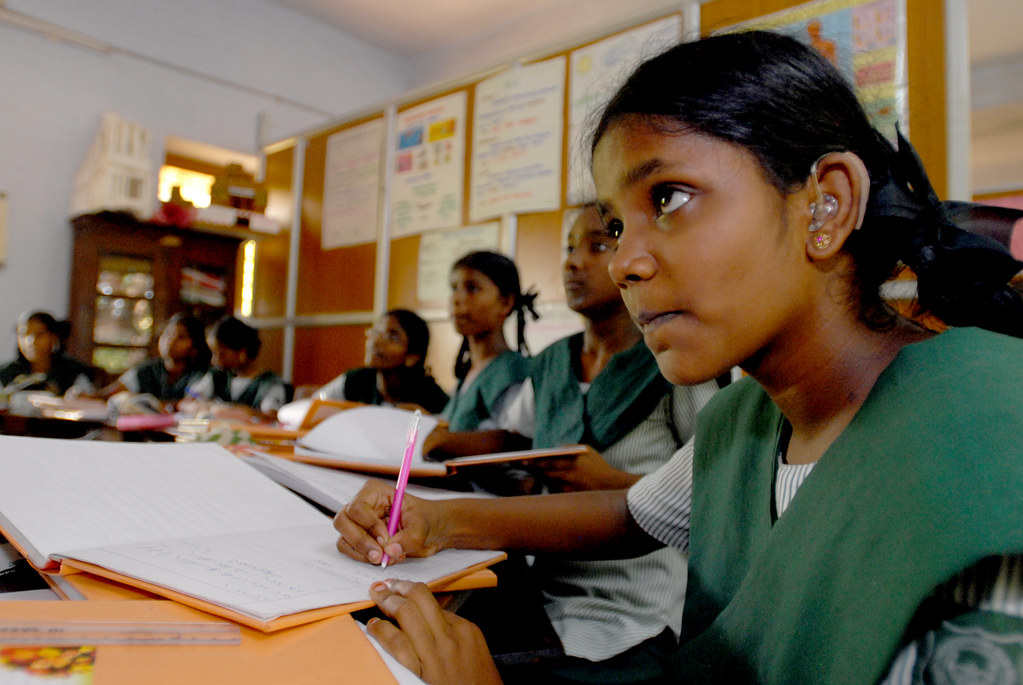
The new education policy tends to focus on development of skills among the learners. But isn’t is too early to conclude that this paradigm shift will bring about a revolutionary change in the society and would also generate a sense of relevance? It is a welcome change that education policy is now focusing on enhancing the skills along with theoretical knowledge but school infrastructure and environment still emphasis on theory rather than practical knowledge session. If schools develop state of the art skill infrastructure, perhaps the learner would find school a welcome place and the monotony of lectures by teachers would be broken for better development of children.
Skill India Mission aims at creating a skilful pool of youth, who can earn a livelihood for themselves without having extra-ordinary or mandatory education. It might not fetch them fancy corporates job but it will surely help them to make both ends meet. Skills are something that should be part of the educational curriculum right from early childhood. Schools in rural and urban areas should be updated with fully equipped skill labs, trainers teaching the use of machines in the industry and basic knowledge of this field until senior secondary level, if they wish to convert it into their profession at later stage then, this basic knowledge will help them understand and excel in a different manner. In addition to this, the school infrastructure can also be used in the second half by training providers rather than giving grants for developing it.
The first major challenge would be to change the mind-set of the stakeholders i.e. the teachers, the learners and the parents. The second challenge would be to provide adequate infrastructure and trainers with clear vision regarding their role. To ensure that the learning of skills is socially acceptable, one needs to bring about a change in the mindset of the society, we need to think about the students who are not good in terms of grades but possess exceptional skills.
Developing Skill infrastructure at school level will not only help in the successful completion of #SKILLINDIAMISSION but also the educational institutions will know what to provide and industries will save the training time of young recruits.
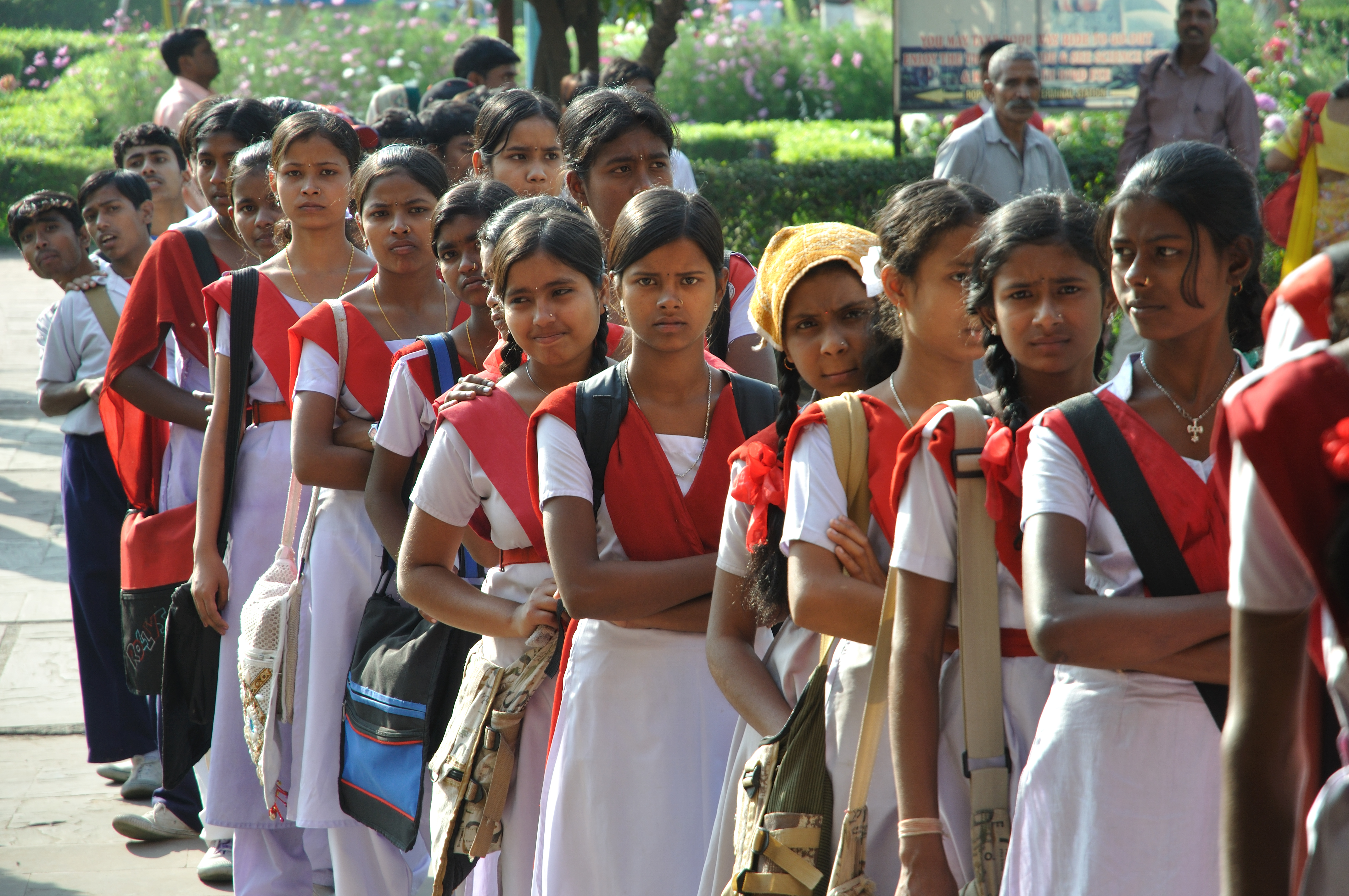
Skill training or vocational training has been encouraged to create benchmark institutions and generate employment for the youth. Various schemes are being sponsored by the government under the Skill India Mission where trainees are being provided state of the art infrastructure and training programs and employment opportunities. The trainees should be made well aware of the facilities government is offering them, they should be aware of their rights and the procedure to claim them.
Often, the beneficiaries do not get full access to these facilities and services due to various reasons, the trainees do not come from a well-qualified background to understand the complex system of registering a complaint. Hence, a model should be created for this, a unique toll free number called “KAUSHAL SAHAYTA NUMBER” or something similar must be launched pan India where a trainee could call anytime and register any kind of feedback against the training providers, complete call center should also be established to register complaints in all the languages. Another option is of creating a web portal where students could login and register their complaints. All of the grievances should be recorded in a confidential manner, this will not only let trainees utilize the facilities but will also enhance their trust leading to the reduction of cost for external monitoring.
Not all the training providers use unfair practices but some of them at times do not deliver all the things that has been sponsored by the government for the trainees, Kaushal Sahayta Number will keep a check on the working of these training providers in a confidential manner and prevent creating a nexus. Execution has always been a challenge for both training providers and the beneficiaries, the problems faced can be easily resolved if handled properly in a convenient manner.
These feedback registered would play a key role in the successful completion of the Skill India mission, it has to be a two
way program where both the investors and the beneficiaries should know what their rights are. Every complaint should be taken seriously and worked upon as it is rightly said “EVERY CALL MUST BE ANSWERED!”

Skill development has been a major area of concern for the present government, a lot of money and efforts had been invested to make SKILL INDIA MISSION a great success. The swift change in the skilling paradigm from fee based model to grant based model indeed enhanced people’s interest into the skill field.
With proper marketing and advertising techniques, government managed to reach out to the lower sections of the society too, it motivated them to learn and also gave them an opportunity to get a job after successful completion of the training. The government primarily focused on the backward, women and economically weaker sections of the society while designing policies for the same. With such huge investment and constant approach of joining people with skill India mission under various schemes, it became a major source of grabbing votes too.
Since, more and more people are enrolling under these projects, it is becoming difficult for the training providers to generate job opportunities or let’s say satisfactory job opportunities for the beneficiaries. Under-employment has become a big pain for the present government, even after attaining a certified training, people are not able to get a decent job for themselves.
Every MP, wants to flaunt the employment numbers they created. Each and every constituency is in the race of creating better and better numbers in order to win people’s trust which will of course add to their vote bank. Though the schemes are not party centric or the system does not favor nepotism in terms of allocating the project, a transparent and clear management has been created after putting lot of extra efforts.
Understandably, this election, political parties are laying thrust on the job crisis, trying to put the Modi government on the mat. In the 2014 general elections, Ruling Party promised to create two crore jobs annually but, is still running behind the target. A bigger problem is the demand-supply mismatch and India’s employability crisis where graduates are poorly skilled. Demographic dividend turning into a demographic curse has been a constant worry. So, will jobs be on top of mind when the Indian voters steps into the voting booth this summer?

A consultant, or counselor, is someone who brings clarity to complex problems in their respective domains. They are committed to one objective: providing objective and intelligent advice. They give extensive knowledge, technical competencies and thoughtful analysis and critical inquiry. However, a broker is any person engaged in the business of effecting transactions in securities for the account of others. The definition of a broker may be a bit complex and nuanced in legal technicalities.
Talking about India, the word “consultant” itself implies the broker part, people often ignore the difference between the two. It becomes difficult to make some people understand that consulting requires efforts and constant approach towards learning and being up-to-date. With Skill India Mission, market for “Skill Consultants” have also increased, but due to unethical ways, corruption, nepotisms, favoritism and other hidden factors that still prevails in our society it degraded the impact of efforts, consultants could have put in getting any project for the Training Providers. Proposal development or tender filling does not require any kind of extra services to be provided to any concerned authorities, if your credentials are good and you meet the eligibility criteria, you’ll get the project. But the area of concern is the phrase “what is the guarantee, how can you assure us to get this project”. We ourselves want an alternative option all the time which is illegal or require any kind of unethical work.
Before blaming the consultants, we need to change our self and stop entertaining these kind of requests or accepting such offers. Broker does not guarantee neither do a consultant but there’s a fair path while working with consultants. You might lose a business but you’ll never lose your image. People often result in burning themselves while paying the broker, instead there should be a proper path for the consulting business! Let the consultants help you in developing your business portfolio, which will help you in the long run. Let the documentation decide your fate rather than paying hefty percentage of profit to the brokers. We need to create a dynamic environment where the private and public sector can work together for the overall development of the society, if there are certain set rules for any scheme, let’s adhere to it and not look for an alternative option. Training providers, consultants and government need to work together in a transparent manner, which will help in their personal growth as well. The question you need to ask yourself is, is it worth the commission to hire a broker?
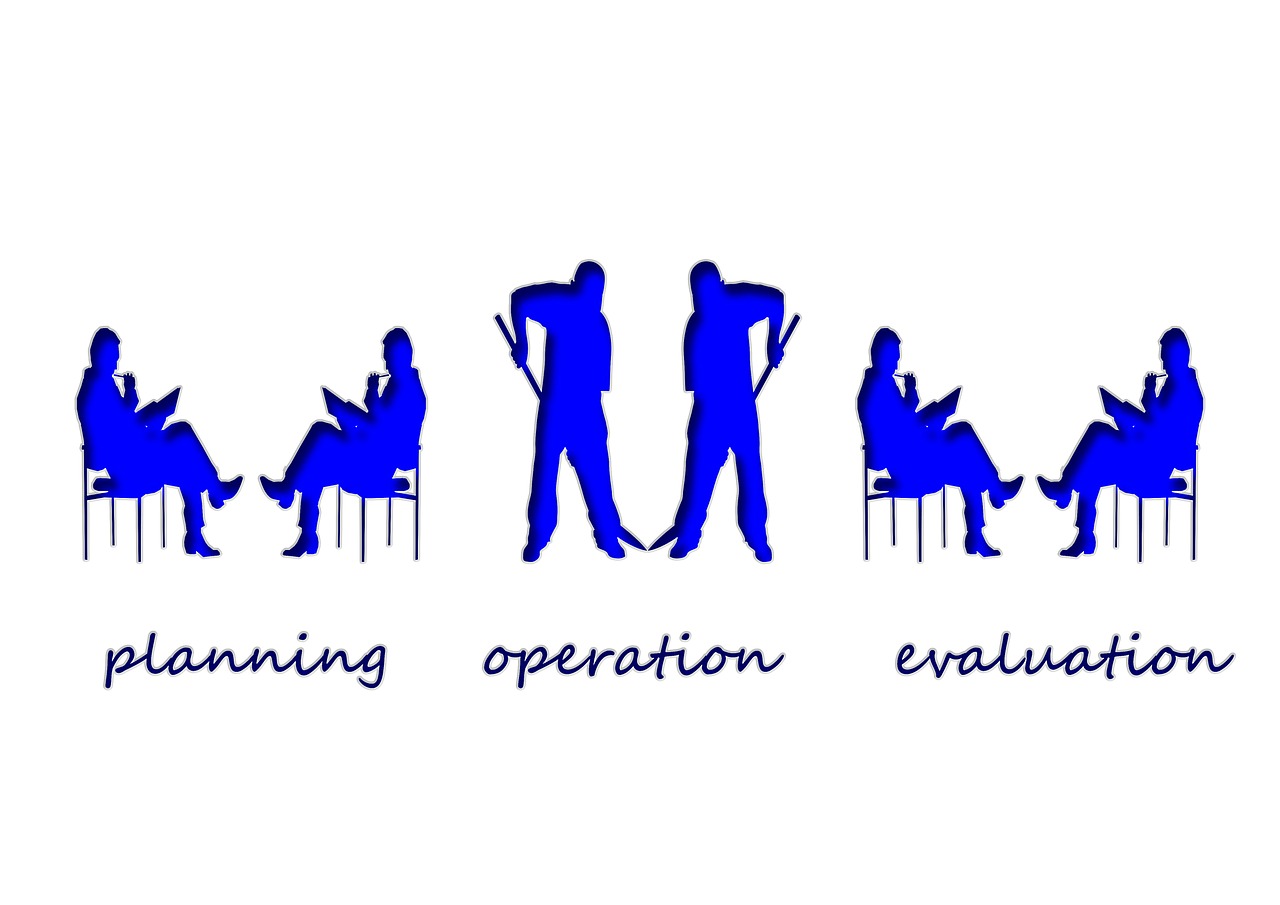
The success of a business organization depends on its ability to convert its plans into reality. This can be achieved by developing strong execution skills. Companies that adopt a disciplined and logical approach to getting things done, use several techniques to transform their strategies into the outcomes that they want. Skilling industry also need to strategize a plan that results into profit and not into exhausting their grants.
The first step is to identify specific goals that are to be met within a stipulated time frame. It is important that every goal is aligned with the guidelines of the project. Next step is to track the achievements time to time, as it is said correctly “If you cannot measure it, you cannot improve it” successful organizations keeps a close tab on the progress, the purpose of this monitoring is twofold. Firstly, it reveals how much work has been done and what all needs to be taken care of. Second, corrective actions can be initiated if, necessary.
Holding a meeting can be the most progressive way of keeping an eye on the financials, employees, problem solving sessions and a creative way to move ahead. Talking about DDUGKY, PMKK, PMKVY and etc. main area of concern is the utilization of the government funds in a positive manner to minimize the promoter’s contribution.
The proper planning of the entire project is mandatory, right from the day one. The PIAs need to calculate their expenditure before-hand so that the quality of training does not declines. Outsourcing the project at times can result into the poor execution and over all failure of the project. Keeping a track of every movement is necessary, government schemes should not be considered only as a profit making business but, also as a social cause for the upliftment of the society.
An organization that builds and strengthens its execution skills will be prepared to take advantage of the business opportunities that may arise while a company that lacks the ability to get things done is unlikely to make a success of itself because strategy without execution is meaningless.

Skills can lend you employment too, the major reason behind unemployment is the lack of educational qualification and the required skills. Today, our nation has successfully tried (up to some extend) to bridge the gap between education and employment. However, the constant approach towards training and placing the youth have seen a tremendous change over the past few years.
Earlier the major institutes like Aptech, Jetking, Tally and many more used to provide certified computer courses to help the candidates secure a decent job for themselves in the market, the fee based private model had literally skilled and trained a considerable amount of youth in the country but scalability was always a challenge due to hefty fee structures. The government of India started Grant cycle to reach out to the lower section of the society, training them and placing them has been the agenda of these schemes. Moreover, courses run under these grant based system are very basic which often leads to unemployment even after completing the certification. The private sector training providers indeed have decreased their quality with the on-set of grant based skilling model which can easily be judged based on the information available on social media.
The only positive side of such a system is mobilizing the poor section of the society, who were reluctant to enhance their skills due to financial problems. According to the government mandate, 70% of the trained people should be placed after successfully completing the course. This data looks good on the paper but the ground reality is disappointing, due to the poor quality of training and lower level selection of the program leads to unemployment. Now along with unemployment, underemployment is also becoming an area of concern.
The government unintentionally killed the fee based ecosystem, as the people denied to pay for the same course when grants is available in the market! Authorities now realized the imbalance created by grant based system and is again trying to establish the fee based ecosystem to maintain sustainability in the skilling domain
A competitive fee based program could enable the training providers to implement evidence-based training programs that would prepare workers for well-paid, highly productive jobs. The nation also needs to focus on creating more high-quality jobs and providing workers with the skills necessary to perform those jobs. In today’s more competitive product and labor markets, employers will create such jobs only if the productivity of their workers can potentially match their higher levels of compensation.
Hence, running both fee based and well as grant based (for lower section of the society) model would help in employing the potential youth of the country because BETTER SKILLS LEAD TO BETTER JOBS.
#SKILLINDIA #SKILLINGMISSION #NSDC #MSDE #GRANTS#BETTERJOBS #BETTERSKILLS #EMPLOYMENT #EDUCATION#SKILLDEVELOPMENT #SKILLTRAINING #ENTREPRENEURSHIP#SKILLADVISORY #STARTUP #MAKEININDIA

Under the #SKILLINDIAMISSION government launched various vocational schemes based on both grant and fee based models, to facilitate employment among potential youth of the country. Every year approximately 30-35 % of the total budget to the tune of INR 10,000 cr is utilized for creating infrastructure & well equipped training Centers to run these schemes. According to NSDC (National Skill Development Corporation) there are approx. 7,316 registered training centers in India and approx. 14,254 ITI centers as per the reports of MSDE (Ministry of Skill Development and Entrepreneurship). The whole Skill ecosystem may be revolving around more than 40000 + Training Centers across India.
Once the project has been sanctioned to the training providers, the quest for executing it efficiently starts. There’s a dynamic relationship between a TP and its Franchise/Infra Partner in this whole skilling scenario. Although there are certain pros and cons of having these franchise associated with their name.
Talking about the positive side, having a Franchise/Infra partner can help in better utilization of the available infrastructure. Local stakeholders can play a major role in successful completion of the project as they are well aware of the people and market of the particular area. They not only help in providing an existing infrastructure but also help in mobilizing the candidates. Daily operations and executional support of these Franchise/Infra partners can often lead to successful cost cutting, hence adding profit to the training providers.
Apart from all the good things, does the outsourcing create any kind of hindrance on the project quality? TP’s are supposed to be responsible for skilling and enlightening students but with the profit sharing model, franchise tends to take a major share of these responsibilities without getting any recognition from the government. Cost cutting in terms of using existing training centers often leads to poor execution and operations. The Franchise/Infra partner does all the work and has to again start from the scratch on becoming a training provider which is a major loss for this pseudo symbiotic relationship. #SkillIndia #NSDC #MSDE #SkillDevelopment #Entrepreneur#Trainingcentres #InfraPartners #Franchise #Skilling #Empowering#Youth_Development #SkillAdvisory #Skilling_the_Future #Power

Judicious and Ethical Utilization of allocated budget is a tedious task for every ministry. Over the past four years Ministry of Skill Development and Entrepreneurship and other ministries had been given a handsome amount of money to facilitate various government schemes under the #SKILLINDIAmission.
The 2018-2019 allocation, however, represents a "drastic cut" by the ministry of finance against Rs 7,696 crore as requested by the MSDE, due to underutilization of funds. In November 2018, the government’s aim of skilling 10 million youth under PMKVY (Pradham Mantri Kaushal Vikas Yojna) by 2020 was found to be 64% short of meeting the actual target with only 3.6 million youth enrolled by November 30, 2018.
Schemes such as PMKVY, PMKK, DDU-GKY were launched with a mindset to provide ROZGAAR (employment) to the youth, various training providers entered the market with a good intention and strong will to train and skill India's potential youth. Over the period of time, the industry has not only seen the #drastic_cut in the budget allocated by the government but also the #dramatic_exit of these training providers. The government's intervention into the Policy Drafting and monitoring part has been insignificant to the level where market is still struggling to be a perfectly competitive.
Underutilization can be a reason of the influx of underperforming training providers who entered into the system on account of poorly fabricated barrier to entry in tenders. In order to set up a balance with in the Skill Ecosystem, government bodies should focus on the capacity building of Training providers in terms of financial discipline, time bound project execution and placement linkages that may eventually sustain the mandate owned by Government of India.
#SKILLINDIA #PMKK #PMKVY #DDU_GKY #Future #Entrepreneurship#SkillAdvisory #SkillingMission

SKILLINDIAMISSION is not just a development plan but, also has a social as well as emotional connect with it. Majority of the training providers enter into skill domain with a good intention, with a vision of empowering the youth, with a goal of creating job-ready labors. Government grant not only provides financial assistance but also stimulates a track for the completion of entire training. Skill development directly contributes to the growth of the nation, enhances its skilled labor force that can work more efficiently.
Various schemes and grants are given as an assistance in equipping the youth and giving them a chance to horn their skills for a better life. The projects should be given to the PIAs who really want to work genuinely with good intentions. Promoter’s assessment is necessary not only in terms of their financial capability but also in terms of their intentions and future goal. There should be a check on the background of every promoter in order to get a clear picture of the management that is going to invest so much on the futures of these candidates.
Talking about good governance, if a political leader has good intentions and mission towards his/her people, the entire system works with the same goal. A good captain will always think about his team mates first in order to bring-out the best, a good teacher will always want his/her students to achieve great success in life. Similarly, these projects should not be treated as money vending machines, the quality of training should not be compromised due to any reason. PIAs previous track record in such schemes and projects should be strictly analyzed and taken into consideration before allocating any work. Promoter’s assessment in terms of their educational qualifications, work experience, personal legal or financial default and social media updates should be tracked in a right manner to evaluate the overall proposal. A PIA should also feel in a similar manner as mentioned in the above examples, in order to make #SKILLINDIA mission a success.
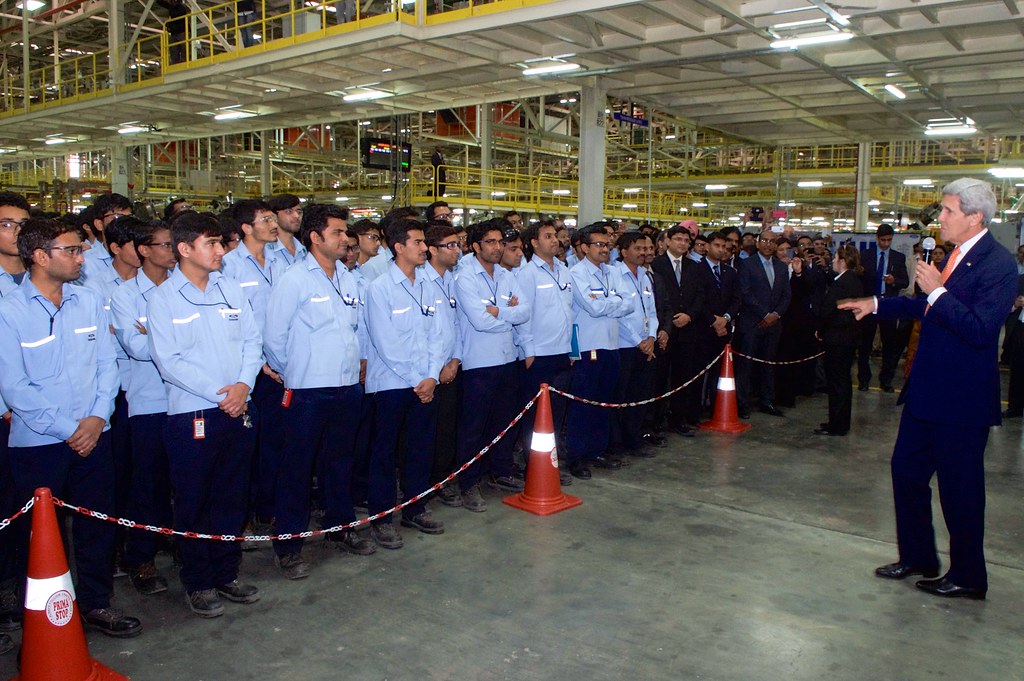
An apprenticeship is a system of training new generation of practitioners of a trade or profession with on-the-job training and often some accompanying study. People who successfully complete an apprenticeship in some cases can reach professional certification level of competence. In others can be offered a permanent job at the company that provided the placement. On 19th August, 2016 Government of India launched a new scheme called NATIONAL APPRENTICESHIP PROMOTION SCHEME (NAPS) to promote the practice of apprenticeship.
NAPS was initiated with a vision to increase the engagement of apprentices from present 2.3L to 50L cumulative by 2020 and also to incentivize employers who wish to engage apprentices. Yes, definitely apprenticeship experience is counted in private industries with loads of advantages. It does gives tremendous exposure in terms of application of theory while working hands-on in premier establishments, where otherwise these candidates would not be allowed into. It actually helps in buying one year time to work on improving employability skills. During course of the apprenticeship, the candidates get to meet many people, thus make good contacts, and contacts can indeed lead to jobs. An apprentice is equipped with job-relevant skills, and helps to co relate education and employment. It also results in gaining confidence and improves employability quotient even as a trainee with enhanced career prospects.
Even organization’s perspective on apprenticeship program is positive. It helps them in training their future work force at a lesser cost during the initial phase. Hiring apprentices implies hiring manpower keen on learning, trained in accordance with the business needs of the organization. Engaging apprentices is also a statutory requirement, this is a way organization can give back to the society.
Significance of apprenticeships is going to be critical element of the country’s training landscape, entire ecosystem should focus on bridging the employability gaps and enhancing the talent pool, focusing on learning. There should be a proper knowledge session for the employers and employees to understand NAPS in a better manner However, one may assume that a general awareness of the Apprenticeship act is not adequate for an employer to start an apprenticeship program under the NAPS. There are certain demerits or critique of having an apprenticeship program too, it is argued that changing or switching career becomes difficult post successful completion of an apprenticeship program. Experiencing university life is also crucial in terms of leaning and development before stepping into working-life. Taking part in an apprenticeship will also come with a lot of responsibility, including getting to work on time, being on schedule, taking care of your finances and, most importantly, completing all your working daily tasks. This added stress can take a toll on a young adult’s well being. Keeping these critiques and demerits a side, the positive side of an apprenticeship program is what drives young talents toward it. A bunch of grads with good industrial exposure, ready to face the challenges of modern world would definitely be a win-win situation for everyone. NAPS and apprenticeship indeed is the future of entire skill eco-system.

With time and rise of technology, the markets have changed and so have their demands. From the age of industrialization to the digital age, the requirements and types of skills have changed drastically. Striding from labour intensive jobs in early industrialization era, we have stepped into a time where need of technical skills is indispensable.
We will choose the story of the IT sector in India to elaborate our thoughts in this article. With the boom of the IT sector in the 90s, India saw a huge requirement for jobs that needed specific skill-sets. The government did all it could to promote it and educational institutions were set up across India. An entirely new market emerged and a lot of money started flowing through this sector. Soon, technological universities earned enormous prestige and everybody wanted a piece of it. This sector within a decade brought millions of dollars into the Indian economy, all because of proper implementation of education policies, addressing the need of new institutions, huge investments and promising returns. This example shows us how rewarding it is for the economy to promote skill specialization in a specific field and adjusting it to the needs of the market.
The IT sector is a very large example. But it is important to see that it is just a bigger display of how small markets function. Every trade in market requires a specific skill-set. In the end, the one with a more reliable skill-set will stay in the trade and others will not.
But what happens to the ones who do not have a reliable skill-set?
According to figures provided by Centre for Science and Environment (CSE), in late 2018, the unemployment percentage among Indian graduates was a disturbing 13.17 percent which was higher than the overall unemployment percentage among youth. Does this data hint something is not right with higher education in India? What it does tell us is that graduating in academics will not guarantee you a job. But it does guarantee you the eligibility of pursuing even higher academic studies, which allows you to go for the next qualification and so on. Even if you attain a terminal-level degree, who can guarantee you a job? What can prove your competency? How will you ever know that the market trusts you with your academic knowledge?
Let’s go back to the IT story and catch up with the present. Since 2 decades till now, the number of engineers in India have risen exponentially. In 2018 headlines read that 94% of engineering graduates were not fit for hiring. The reason stated was that there is a huge skill gap between the graduates and the expectations from available job profiles. If a giant of a sector such as IT can face this problem of unemployment due to lack of skills, then we can only imagine how much more other smaller markets in India must be struggling.
Soon after graduating from XYZ College, a young Indian may start looking for their dream job. They will go company to company with hopes in eyes and mark sheets in their hands. Unfortunately they get rejected from the first one. ‘It’s normal’ they say to themselves after not having succeeded in the first attempt. They go to the next company and then another and then the one next to it. Soon they realise that they might not have what these companies are looking for. And no surprise to us, they are correct. According to numerous interactions with representatives from giants like Google, Siemens, Netflix and many more, it has been made clear that industry leaders are only interested in hiring applicants who possess relevant knowledge and applied skills instead of the ones who only have pretty college degrees.
The basic dynamics of the market: supply and demand, never change. The supply and demand we’re talking about let be quality and skills. And whenever there is a gap in supply and demand, evils like unemployment are birthed.
India has been fighting a long battle against unemployment among youth. Governments and intellectuals have found a hundred reasons to blame. One which is often left out from heated political debates is the role of education curriculum in India. As we saw in our IT story, the downside came when a huge imbalance was created in qualified youth or shall we say, relevantly qualified youth. With no constant revision of curriculum and inadequate advancements in teaching techniques, a significant number of capable youth is left stranded after completing higher education. Simply because they lack the skills to compete in the market.
There are many untapped markets in India. With proper and specialized skill development opportunities, the largest youth workforce in the world can be prevented from being a dead weight. We need to start contributing to the industries as individuals by learning and applying valuable skillsets. We need to stop being blind consumers of the higher education market. It is very ironic and shameful to say that ‘higher education in India is causing unemployment’.
The idea that we take from this is that if we are able to identify our talents, work on our skills and shape them to fit the opportunities out there and then walk into the market and fully apply ourselves, then we too will receive handsome rewards. But going out there with a piece of paper to prove your worth just might be an exercise in futility.
Drafted by – Harshil Tewatia

Kudos to India for securing 4 podium finishes at World Skill Competition 2019, Kazan! Three well educated and one passionate individuals secured Gold, Bronze and Silver medals this year by showing exemplary knowledge and skills in their respective fields. The event was organised by WorldSkills international.
WorldSkills International organises the world championship of vocational skills every two years. The organisation, which also hosts conferences about vocational skills, describes itself as the global hub for skills. It works effectively towards its objectives which are-
National Skill Development Corporation (NSDC) under Ministry of Skill Development and Entrepreneurship through its WorldSkills India initiative has been leading India’s participation into the international event since 2011. NSDC has successfully secured medals at this prestigious event-
However, it falls very flat when it comes to fulfilling its objectives
3 out of 4 medal holders come out of well-established academic institutions, and one who learned by passion but NONE who has learned from any initiative under Skill India mission. Under Skill India mission 2015, not only NSDC but many similar bodies from other ministries have been working tirelessly to skill the youth and especially rural youth under DDU GKY, PMKVY, NULM, SEKHO AUR KAMAO, SAMARTH etc. The long term goal is to have trained 400 million people by 2022. With astronomical goals such as these it becomes necessary to glorify the best of the skilled personnel that these schemes have been producing.
The most important objective which needs attention is ‘Raising awareness among youth and encouraging them to rise up’. They need to let the government help them with their widespread missions. But the youth is not entirely convinced. Skill development, for underprivileged men and women is just a way to make a small living because they have no means to know how useful they can be to the economy. These men and women have no one to look up to. No inspiring story to be motivated from. The WorldSkills competition did reward our skilled medallists from academic backgrounds, but not one person who had been trained under the Skill India mission was able to represent India, let alone win. A huge stage is thus wasted.
WorldSkills aims to ‘Encourage 'parity of esteem' between vocational and academic qualifications’. That doesn’t seem to be the case in India. If it were, then SKILL INDIA MISSION ought to have put up at least a couple of skilled trainees coming out of training centres put up under the Skill India mission. It is proven here that we are still far from comparing the esteem of vocational skills and academic qualifications as we have seen which is valued more.
The foundation brick of the first ‘Indian Institute of Skills’ was laid this year under SKILL INDIA MISSION. This is a beautiful of ray of hope. It proves how determined the government is to realise the Skill India Mission. It shall provide the best facilities required to create the most competent skilled men and women. However, we will only reap its fruits in the distant future. But it gives us the idea of what we might be lacking as of now. An institute such as this will provide a dynamic learning space, exposure and an honour to the trainee along with work under NAPS. If we are able to vest some of the current institutions/Training centres with such prestige, it would definitely give people something they would want to chase. If people honour an institution, then they will also honour the ones who are associated with it. Much likely how underprivileged youth would honour someone deprived rising up to compete and win at a global event and consequently also the Skill India Mission.
To boost competency and create a holistic learning environment, these basic suggestions/areas need to be worked on-
The best of the trainees need to be acknowledged. This creates a benchmark for all aspiring trainees. The trainees will gain exposure at all levels and get a chance to present their skill to the community. Not only the Trainee Scholars, but other trainees and upcoming batches would also benefit from this program through direct mentorship. In the end our aim would be to selectively train the passionate trainees to become even better through apprenticeships.
Selection- Through intra and extramural competitions, talent can be easily identified. If not then the trainers can select the top 10% who can then be shortlisted through interviews. We need to choose the top 5-10% trainees (number subjective to the course and size of batch) from all training centres for each skill.
TSP Skill camp- All trainee scholars from a zone (Roughly 10-12 zones in country) will meet at a zonal camp which shall last for at least 3 days. Needless to say, this camp will be free of cost. The first objective is to make trainees more social and communicative. With engaging team activities all day long, most trainees will experience an absolutely new atmosphere. The second objective is to fire a competitive spirit and assess candidates to be selected for the National TSP skill camp. This will be done through competitions scheduled within these days. At the end of this camp another 5-10% Trainee scholars will be selected for National TSP camp. And other trainees will continue to receive the rest of the benefits of the program. From the national skill camp, the best of the candidates shall be direct entries for biennial IndiaSkills national competition wherein these trainees will get a chance to compete and represent their country at international level.
TSP Mentorship- Capable TSP alumni will get a chance to mentor their junior batches. This will also allow them to earn per session. They will act as guides and inspire the trainees. They shall directly counsel the trainees at the training centres. Motivation is birthed at the smallest level and TSP alumnus shall even contribute in organising and operating the Skill Camps. All this is good exposure and gives a taste of aspiration to the trainees.
TSP Apprenticeship- This is the best opportunity that Trainee scholars get. With tie-ups to private sector industries, Trainee Scholars shall be given the opportunity to intern or become an apprentice at these companies. They shall spend 50% of the time of their curriculum length in practical learning at these companies. A common apprenticeship curriculum shall be devised which companies can easily follow. This will provide work experience for future opportunities and refinement of practical skills.
India is in the early phases of an almost vertical economic graph. Soon with efforts of the private and public sector, not only will the products be labelled ‘made in India’ but manpower be proudly tagged ‘Skilled in India’. After realising all this, we can be sure to come up with qualified aspirants eligible to represent India in their own game.
Drafted by - Harshil

What is the use of skill development activities which fails to deliver a better future? Skill India mission aims at training and changing millions of lives through various schemes. These schemes not only promises to improve skills but also to give them a satisfactory job. But the traditional pattern of training providers seen over the past few years have been one of the reason behind failure of this aim. What we see around are newly borne training providers with no prior experience in the education field. Most of the big organizations with good experience in vocational education or skill training have yet not entered into the grant based model. These training providers could really be an asset to the whole skill India mission.
It isn’t always the situation where a newly entered training provider fails to deliver what he has promised but indeed proves out to be a genuine player in the end but not all the newbies tend to manage up to a level where a candidate gets a satisfactory job. Before getting into a grant based model, a new player should think about running a self-sustaining model to get an idea of the skill eco-system. This will not only improve their understanding but will add to their credentials as well.
What the government should really think about is improvising the eligibility criteria a bit, minimum 2-3 years of prior experience should be made mandatory before sanctioning any project to training providers. Over all background of the promoters should also be thoroughly analyzed and judged keeping in mind the future placements. Educational institutions should be encouraged to step into this field as it will improve the training quality and will also, provide a perfect path of imparting skills.
The training provider pattern should be changed to see positive results and outcomes in terms of placement under these schemes. In the past few year we’ve seen the underemployment statistics constantly rising due to poor implementation of these schemes at some or the other level. We need to find the root cause and should try changing the pattern to make #SKILLINDIAMISSION a great success.